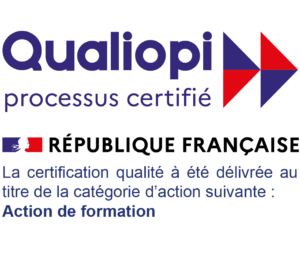The NS has an innate program to respond to danger by attacking or escaping (as do all vertebrate animal species). The NS is intended to return to regulated social functioning once the danger is no longer present. Human beings, unlike other animal species (whose NS can return to the regulated state on its own) need external regulation to effect this return to the basic state. This is especially true of children.
This regulation, which involves interaction with another human whose NS is regulated, is called co-regulation. It is therefore through co-regulation that the dysregulated NS of an individual exposed to danger returns to regulation. If the danger persists or if the individual does not find co-regulation, dysregulation sets in over time, at the cost of adaptations that involve brain regions devoted to emotions and social interactions: the development of automatic patterns that condition behavior, based on belief systems and repressed (non-metabolized) emotions. This is fundamentally an adaptive mechanism based on dissociation.
This corresponds to a fundamental adaptation mechanism at the neurobiological level, which explains the development of personality sub-compartments that are independent (to varying degrees) of one another. These sub-compartments organize themselves to maintain an internal equilibrium and thus try to replace the lost equilibrium (the one that existed before the danger occurred) which could not be restored. These new internal balances (but which fundamentally remain imbalances) are most often manifested in the form of psychological states experienced as polarizations or antagonisms.
There is only one alternative to dissociation, and that is association. This can be seen as one of the main functions of the NS: to integrate in a coherent and meaningful way the different components of an individual's experiences. This work involves the NS as a whole.
Because co-regulation brings into play, as a priority, the oldest structures of the NS (devoted to survival mechanisms), it constitutes a key factor in mobilizing the possibilities of the NS to carry out this association process.
From the perspective of the IR model, it is the peri-traumatic dissociation mechanism that accounts for the development of the parts as described in IFS, and their organization in rigid interaction patterns. When the dissociation is deep and present from the period of attachment, it leads to dissociative personalities or structural dissociation as theorized by Ono Van der Hart(Nijenhuis and van der Hart, 2011). From this point of view, the vision of the IR model differs from that of the IFS model in that the fundamental psychopathological mechanism is peri-traumatic dissociation and not, as represented by the IFS vision, the diversion of the normal functioning of parts that the individual is claimed to be endowed with at birth. The IR model, like the IFS model, nevertheless recognizes the modular functioning or multiplicity of the psyche.
Dissociation appears to be more fundamental than traumatic memory (which also proceeds from dissociation through the fragmentation of memory elements). This element is essential in the treatment of attachment disorders which do not give rise to episodic memories, but are immediately inscribed in the brain in the form of dissociative memory.





